 Dear friends,
Dear friends,
Since some of you have been complaining about the cases being difficult, Muppet wants to show a really difficult case: a 76-year-old woman with previous heart troubles and currently asymptomatic.
Diagnosis:
1. Calcified pericardial cyst
2. Hydatid cyst of the heart
3. Intracardiac calcified aneurysm
4. None of the above
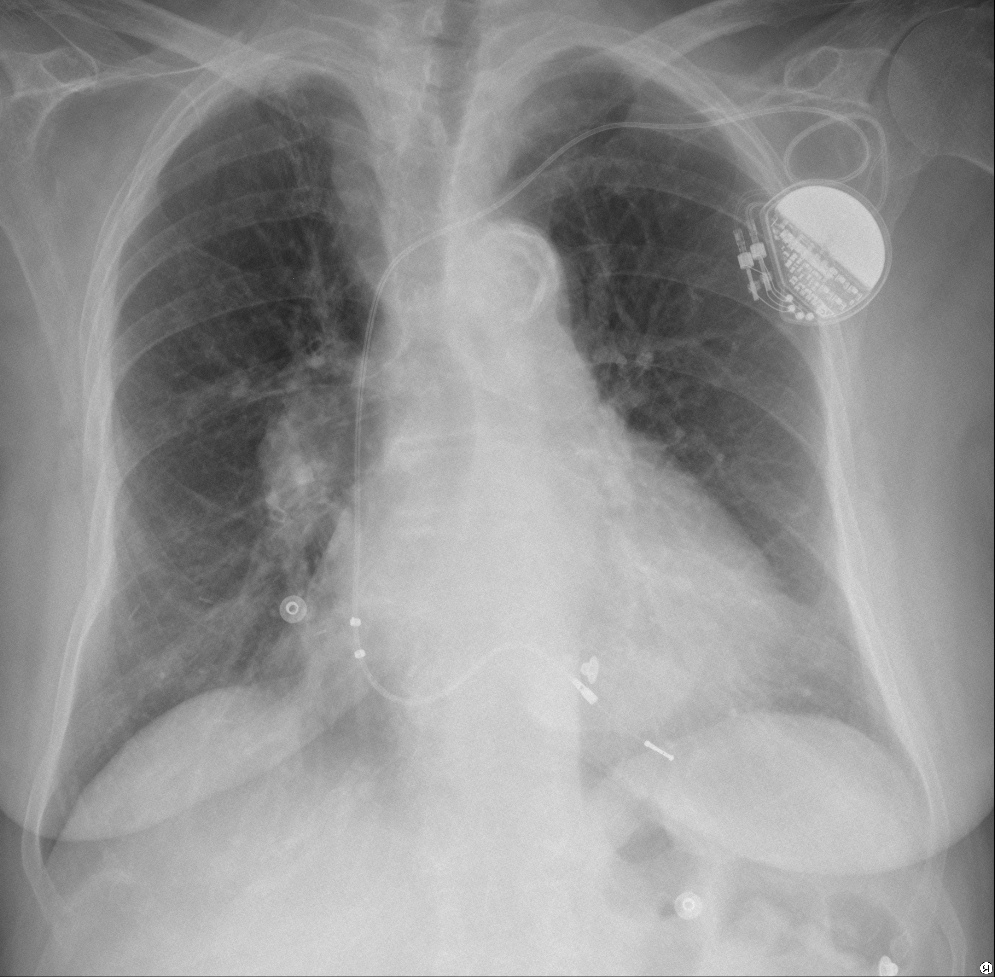
76-year-old- woman, PA chest
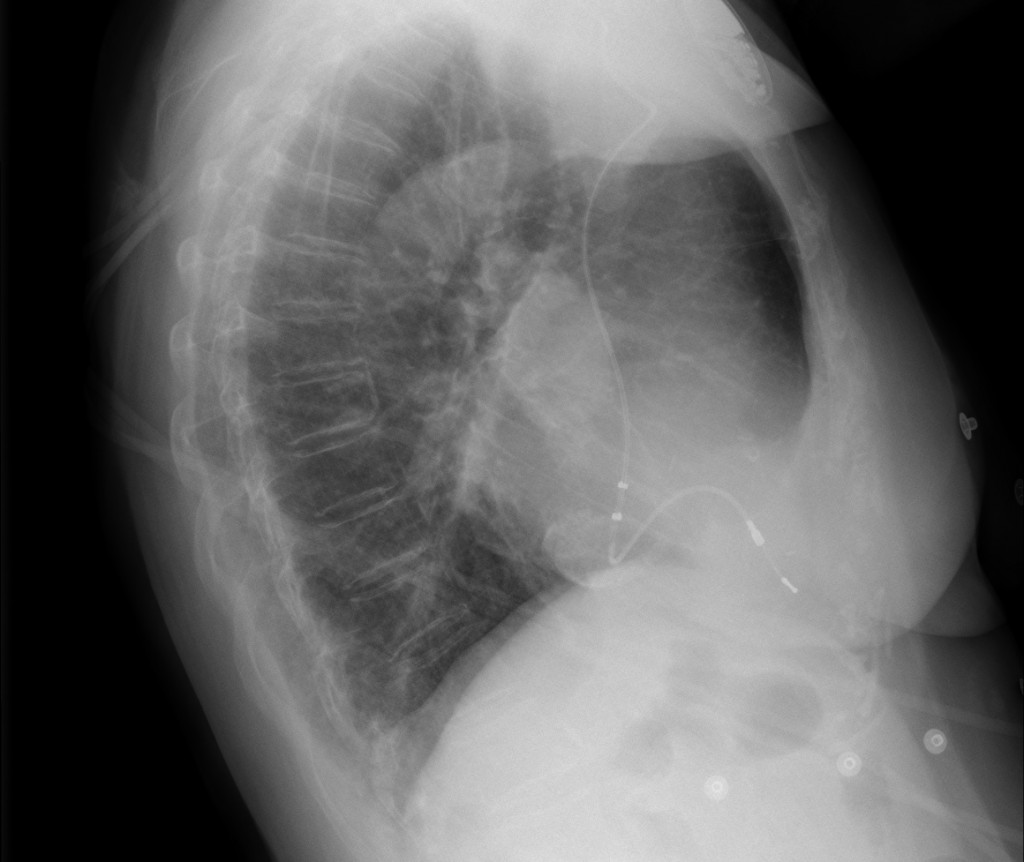
76-year-old- woman, lateral chest

76-year-old- woman, axial CT
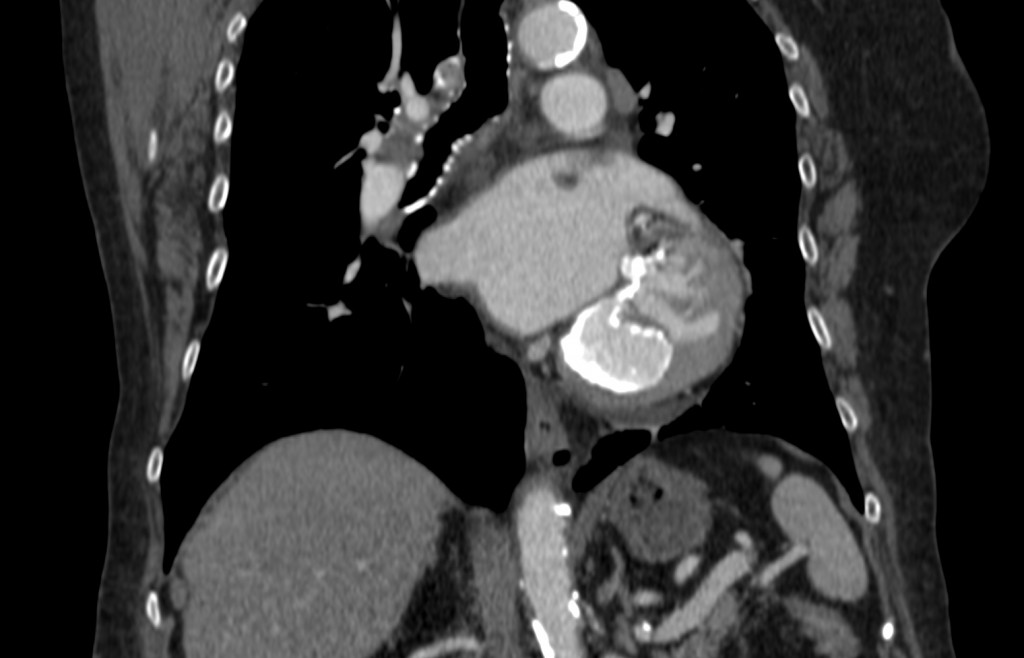
76-year-old- woman, coronal CT

76-year-old- woman, sagittal CT
Click here for the answer to case #35
Since Muppet said this is a difficult case, most of you have made the correct diagnosis, just to spite him. The main finding is an oval calcified cardiac opacity, barely visible in the PA chest and better seen in the lateral view (arrows).
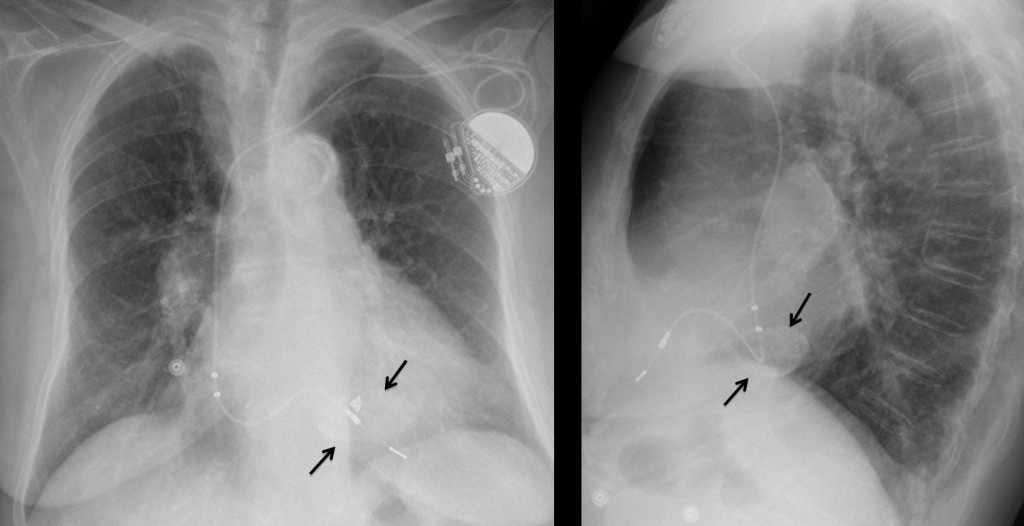
Fig. 1
CT confirms the presence of the oval calcification (Fig. 2, arrows). Although the appearance is striking, the aspect is characteristic of caseous necrosis of the mitral annulus, an entity described in the eighties, due to degeneration of the annulus. It occurs in elderly patients and does not cause any symptoms. The word caseous is related to the central degenerative softening and has no relationship to tuberculosis.
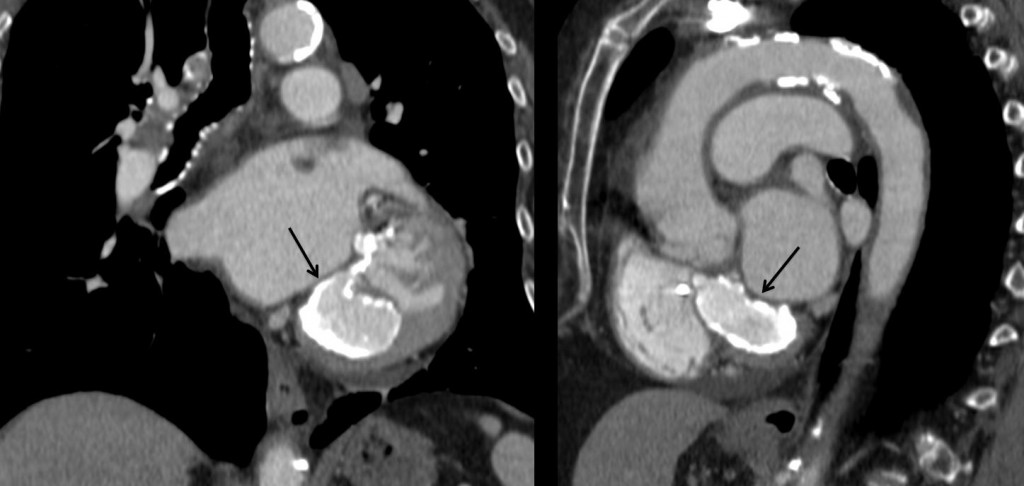
Fig. 2
Final diagnosis: caseous necrosis of mitral annulus.
Teaching point: it is important to recognise this entity to avoid confusing it with other pathologies. Muppet believes the plain film appearance is very typical. As far as he knows, it has not been described in the literature, because nobody cares about plain films anymore.
N.B. Some of you have complained that the images are too small. Muppet is happy to announce that he has been told a trick to enlarge them. Once the image is selected, hold down ‘control’ (cmd in Mac) and click the ‘+’ key. Every click increases the size of the image. To reverse, click ‘–’.










I would think of posterobasal left ventricular pseudoaneurysm. Probably due to a previous infarct.
Caseous calcification of the mitral annulus
I also thought in the liquefactive necrosis of the mitral annulus because of the location and this calcic deposition (which seems to be characteristic); but the fact is that there is an addition imagen contrast filled which should be by definition a pseudoaneurysm. To be honest I dont’t know if this entity can complicate weakening the cardiac wall and cause secondarily a pseudoaneurysm.
Se la diagnosi è difficile , entra in campo il…BARI:a me sembra che la calcificazione, in sede ventricolare sx, abbia un peduncolo di raccordo con la mitrale e che la sua morfologia imita un muscolo papillare, ipertrofico e calcificato(fibro-elastoma m. papillare?), con cardiopatia congestizia da insufficienza cuore sx.
I would like to compare the Chest xr with older images, and check the clinical information for more details (has the patient had an infarction)?
However, so far i favor the above mentioned caseous necrosis of calcified mitral annulus.
Chest radiograph two years earlier showed the same findings. No history of infarction.
Cardiac hydatid cyst is not because the radiological findings are not typical and their frequency is very low (and even in that location even more heart).
Nor calcified pericardial cyst that is not its most common and radiological findings are not typical.
My question is 3 or 4. Still think ..
it’s a calcified aneurismal left pitvar ! so number 3 !
Dense calcification of the mitral valve makes me strongly consider Rheumatic Heart Disease in this elderly female…
massive calcification of an atrial appendage/atrium (so-called ‘porcelain’ atrium is described
Hence, my best bet in this patient with longstanding calcification of her mitral valve and left atrial appendage – rheumatic heart disease.
Hence, answer is 4 = none of the above.
Hey Dr Pepe and Dr Caceras,
any advice on how long one should take answering each structured questions in the actual EDIR exam? Some tips would be useful!
Will check with people in charge and answer a soon as possible.
You’re the BEST! Thank you!
3. Intracardiac calcified aneurysm
My answer is 4.
There is a wide left atrial calcification which suggests chronic mitral valve disease, may be rheumatic.Actually, there seems to be a valve calcification that affects not noly the annulus.
The PA and lateral view of the chest x-ray shows curvilinear area of calcification in the region of anatomical landmark for ventricles(seen overlapping the cardiac shadow posteroinferiorly in lateral view and left retrocardiac region in PA view-suggesting ventricular region). CXR also shows evidence of cardiomegaly with dilated right branch of pulmonary artery. No evidence of any pleural effusion is seen. Single chamber pacemaker is seen in situ with its lead in right ventricle.
Contrast enhanced CT shows a large lesion with thick walls in relation to the left atrioventricular groove. There is differential hyperdense attenuation within this lesion-possibly central part is contrast filled with outer calcified rim-suggesting pseudoaneurysm (true aneurysms are very rare at this location). there is small nipple like projection from its medial wall seen in coronal images-suggesting neck of pseudoaneurysm or communication with the coronary artery.Left atrium is separately seen. Rest of the visualised chambers appear normal. based on the imaging findings the possibility of intracardiac pseudoaneurysm appears likely(true aneurysms-as rare at ths site, wide neck and thin walled) arising from 1.coronary artery(in view of nipple like projection) or 2. from posteroinferior wall of left ventricle.
Most likely left ventricular pseudoaneurysm
Molte grazie per il bellissimo caso, molto istruttivo:adesso so tutto su BIB-MAC |